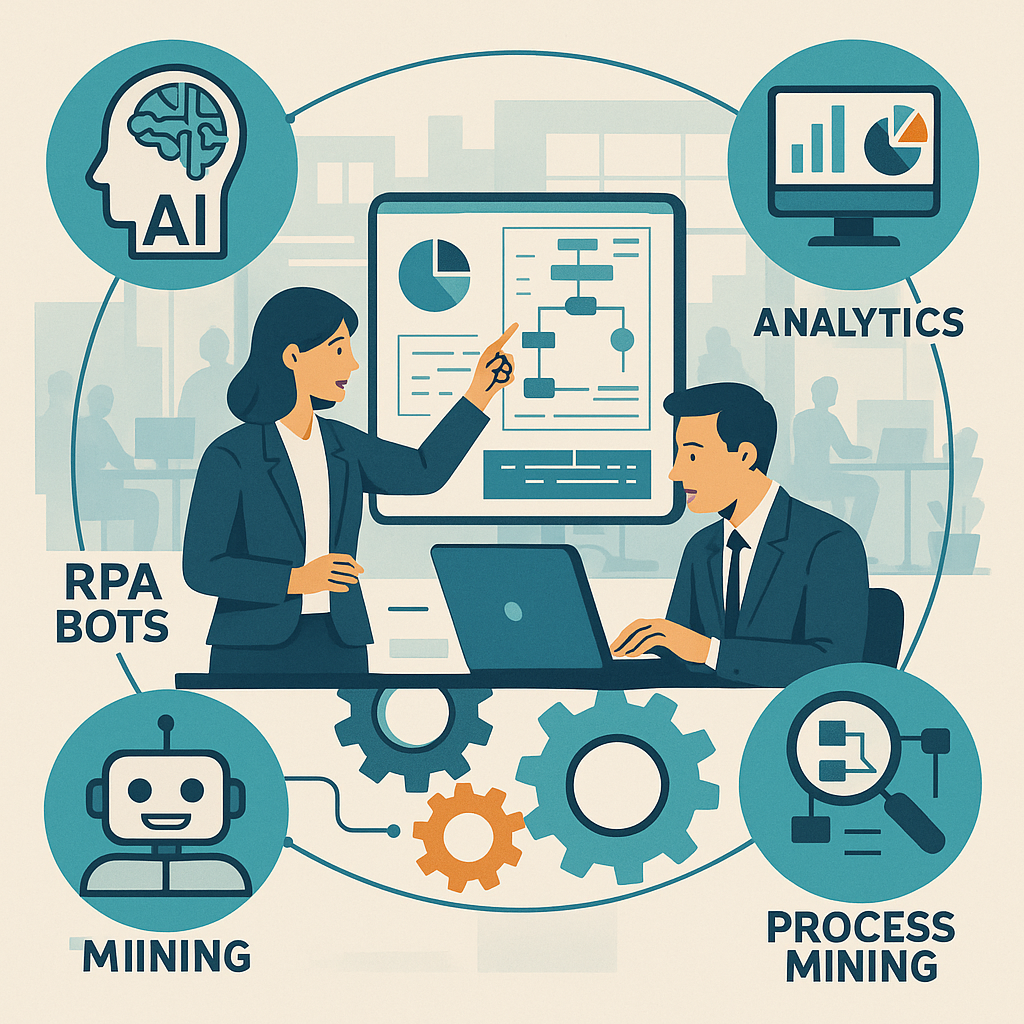Hyperautomation: The Next Frontier in Business Process Optimization

Hyperautomation has emerged as one of 2023’s most-talked-about trends in business operations. As organizations race to digitalize, the move from simple automation to hyperautomation is turning heads—and budgets—in the direction of transformative, large-scale change.
What is Hyperautomation?
Unlike traditional automation, which focuses on automating specific tasks, hyperautomation leverages advanced technologies—like artificial intelligence (AI), machine learning, robotic process automation (RPA), process mining, and analytics—to automate not just tasks, but entire end-to-end business processes. It’s about orchestrating automation across the organization for maximum impact.
Key features include:
- End-to-end process automation (not just individual tasks)
- Integration of multiple tools (AI, RPA, analytics, process mining)
- Workflow optimization, not just rule-based automation
- Human-in-the-loop for exceptions and oversight
Why 2023 Is the Year of Hyperautomation
Analysts from Gartner and Forrester declared hyperautomation a top strategic trend for 2023. Businesses are motivated by:
- Growing labor shortages
- Demand for faster, error-free operations
- The economic imperative to do more with less
- Advances in user-friendly automation platforms
Companies in finance, healthcare, manufacturing, and logistics are especially keen to streamline legacy processes. As a result, 2023 saw a surge in enterprise investment in hyperautomation platforms and talent.
Real-World Impact: Case Studies
Financial Services
A leading European bank used hyperautomation to unify its loan processing. AI-driven document processing, combined with RPA bots and process mining, reduced loan approval times from weeks to less than three days. Employee satisfaction improved due to less repetitive manual work.
Manufacturing
A global electronics manufacturer leveraged hyperautomation to digitize supply chain management. AI models predict bottlenecks while RPA agents execute procurement and inventory management, resulting in a 30% reduction in operational costs.
The Technology Behind Hyperautomation
- Robotic Process Automation (RPA): Automates structured tasks and workflows
- Artificial Intelligence (AI): Powers cognitive tasks like document understanding and chatbots
- Process Mining: Maps and analyzes real processes for hidden inefficiencies
- Low-Code Platforms: Enable business users to build workflows without extensive coding
By combining these, companies can analyze, redesign, and seamlessly execute optimized processes.
What Business Leaders Should Consider
- Map the Process Landscape: Start with process mining for visibility
- Prioritize Business Goals: Automate where impact is high, not just where it’s easy
- Blend Human and Machine: Use human-in-the-loop for oversight, creativity, and exception handling
- Change Management: Invest in upskilling teams and managing cultural change
Looking Ahead: A Competitive Imperative
Hyperautomation isn’t just a buzzword—it’s fast becoming a key lever for survival and growth. The organizations that move swiftly to adopt, orchestrate, and scale hyperautomation in 2023 will be best equipped to stay resilient, responsive, and ahead of the curve.
Ready to start your hyperautomation journey? Begin by mapping your processes and exploring which tools make sense for your business needs.